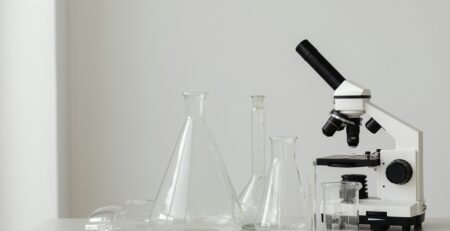1
Sep
Class A vs Class B Glassware: Accuracy Standards Explained
Accuracy is the foundation of reliable laboratory results. Whether in schools, research institutes, or Australian quality control labs, choosing between Class A and Class B glassware can directly impact experimental outcomes. Many laboratories overlook the distinction, but understanding it ensures compliance, precision, and cost-effectiveness.
What Do Class A and Class B Mean?
Laboratory glassware is manufactured and classified according to international standards such as ISO 1042 and ASTM E288.
- Class A glassware: Highest accuracy, individually calibrated, with tolerances about half those of Class B. Often supplied with calibration certificates.
- Class B glassware: General-purpose use, lower accuracy, bulk manufactured, and suitable for teaching or routine tasks.
Both classes are usually made from BORO 3.3 borosilicate glass, but their intended applications differ significantly.
Accuracy and Tolerance Comparison
| Feature | Class A Glassware | Class B Glassware |
|---|---|---|
| Tolerance | ± 0.05–0.1 mL (depending on capacity) | ± 0.1–0.2 mL (depending on size) |
| Calibration | Individually calibrated (ISO/ASTM traceable) | Bulk calibrated |
| Use Case | Analytical chemistry, pharmaceutical QC, research | Teaching labs, general mixing |
| Cost | Higher, due to precision and certification | Lower, ideal for bulk purchase |
When to Use Class A vs Class B
- Class A: Required in accredited laboratories, pharmaceutical testing, analytical chemistry, and any setting where results must meet strict compliance standards. For example, an Australian pharmaceutical QC lab using Class A volumetric flasks ensures dosage formulations meet TGA regulations.
- Class B: Perfect for schools, teaching labs, and general research where absolute precision is not critical. A Melbourne secondary school recently adopted Class B measuring cylinders from LabChoice Australia for safe, reliable, and cost-effective student experiments.
LabChoice BORO 3.3 Advantage
LabChoice Australia supplies both Class A and Class B glassware, manufactured from BORO 3.3 borosilicate glass in compliance with ISO 3585. This ensures superior thermal resistance, chemical durability, and reliability in both high-precision and teaching environments. Every product is inspected for quality, giving Australian labs confidence in their results.
FAQs
Is Class A always better than Class B?
Not necessarily. Class A is more accurate, but Class B is ideal for education and routine applications where precision demands are lower.
Do Class A flasks come with certificates?
Yes, most LabChoice Class A glassware is supplied with calibration certificates traceable to ISO standards.
Can I autoclave Class A and Class B glassware?
Yes, both types made from BORO 3.3 can withstand repeated autoclaving cycles.
Are Class B items acceptable in industry labs?
They can be used for preliminary experiments, but accredited work usually requires Class A.
📚 References
Standards & Specifications
- ISO 1042:2013 – Laboratory glassware — One-mark volumetric flasks. International Organization for Standardization.
https://www.iso.org/standard/55880.html - ASTM E288-20 – Standard Specification for Laboratory Glass Volumetric Flasks. ASTM International.
https://www.astm.org/e0288-20.html - ISO 4788:2021 – Laboratory glassware — Graduated measuring cylinders. International Organization for Standardization.
https://www.iso.org/standard/73996.html - ASTM E542-20 – Standard Practice for Calibration of Volumetric Glassware. ASTM International.
https://www.astm.org/e0542-20.html
Academic & Safety Guides
CSIRO – Laboratory Measurement Standards – Best Practices in Calibration and Use of Class A Glassware. CSIRO, Australia.
https://www.csiro.auities, and industry labs can choose the right tools for their scientific goals.
NIST Handbook 105-2 – Specifications and Tolerances for Laboratory Volumetric Glassware. National Institute of Standards and Technology, USA.
https://nvlpubs.nist.gov/nistpubs/Legacy/handbooks/NBSHandbook105-2.pdf
American Chemical Society (ACS) – Choosing the Right Class of Volumetric Glassware in Analytical Chemistry. ACS Education Resources.
https://www.acs.org/safety
University of Melbourne – School of Chemistry – Undergraduate Practical Guide: Class A vs Class B Tolerances in Laboratory Work. Melbourne, Australia.

